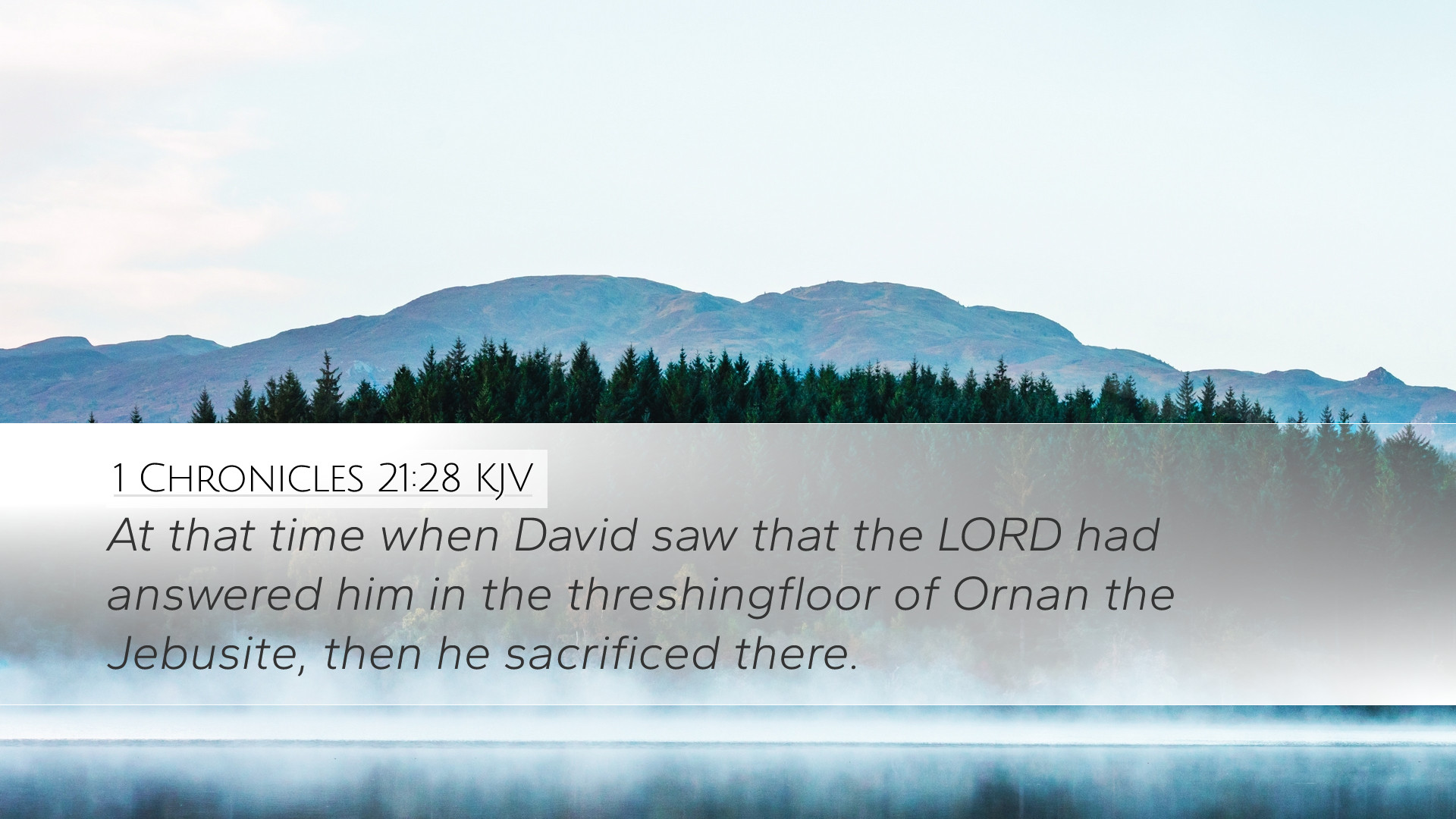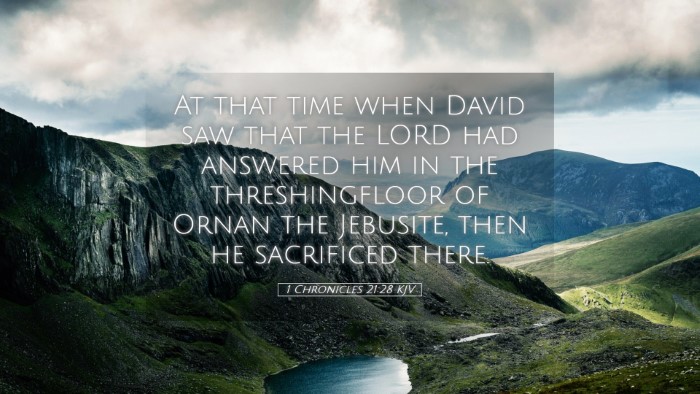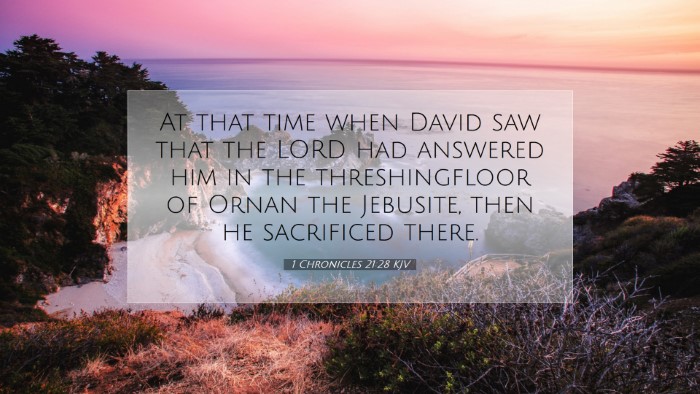Commentary on 1 Chronicles 21:28
1 Chronicles 21:28 states: “At that time, when David saw that the LORD had answered him in the threshingfloor of Ornan the Jebusite, then he sacrificed there.” This verse captures a pivotal moment in King David's reign, reflecting themes of repentance, divine mercy, and sacred worship.
Contextual Background
The context of this verse is rooted in the larger narrative of David's sin of conducting a census of Israel, which was seen as a lack of trust in God (1 Chronicles 21:1-7). Following the census, a judgment from God led to a plague affecting Israel, prompting David to seek reconciliation with God. The choice of Ornan’s threshing floor for sacrifice symbolizes a turning point in David’s relationship with God.
Divine Response
Matthew Henry’s Commentary emphasizes that David's realization of God’s response to his acts of repentance is crucial. The Lord answered David’s prayers, signifying that even in the wake of sin, there remains a pathway to redemption through sincere acknowledgment and sacrifice. David perceives the threshing floor as a holy site because it is here that he understands the gravity of his actions and the extent of God’s mercy.
The Threshing Floor of Ornan
David's encounter at Ornan’s threshing floor bears significant theological implications. Albert Barnes notes that this location becomes a symbol of atonement and sacrifice, as it is here that David offers a burnt offering to the Lord. This is not simply a casual offering but a profound act of worship that restores David’s relationship with God.
Symbolism of Sacrifice
David’s sacrifice is a powerful representation of repentance (as explored by Adam Clarke). The act signifies the acknowledgment of sin and the desire for atonement. Clarke notes that true worship stems from a heart that recognizes its shortcomings and seeks God’s forgiveness earnestly.
Lessons for Contemporary Believers
This passage carries vital lessons for pastors, students, theologians, and scholars:
- The Urgency of Repentance: Just as David turned back to God after recognizing his error, modern believers are reminded of the need for genuine repentance.
- Understanding Divine Mercy: The steadfastness of God's mercy is underscored through David's experience. God responds favorably to sincere turning back to Him.
- The Importance of Places of Worship: Locations where significant spiritual encounters occur, much like Ornan’s threshing floor, serve as reminders of God's dealings with humanity.
Theological Reflections
From a theological standpoint, this verse elucidates several critical components of faith:
- God’s Sovereignty: The consequences of David’s actions illustrate God’s overarching authority and the seriousness of sin.
- Covenantal Relationship: David’s actions and subsequent sacrifices reveal the complexities of the Old Testament covenant, highlighting how God desires a restored relationship with His people.
- Prefiguring Christ’s Sacrifice: The themes of sacrifice here point towards the ultimate sacrifice of Christ, who restores humanity’s relationship with God forever.
Conclusion
In summary, 1 Chronicles 21:28 encapsulates the essence of restoration through sacrifice. Through David’s actions and the ensuing divine response, believers are gifted with profound insights on repentance, worship, and the heart of God towards those who turn to Him in sincerity. This passage serves as a reminder of God’s unfailing grace, extending an invitation for all to return to Him, no matter the magnitude of their sins.


